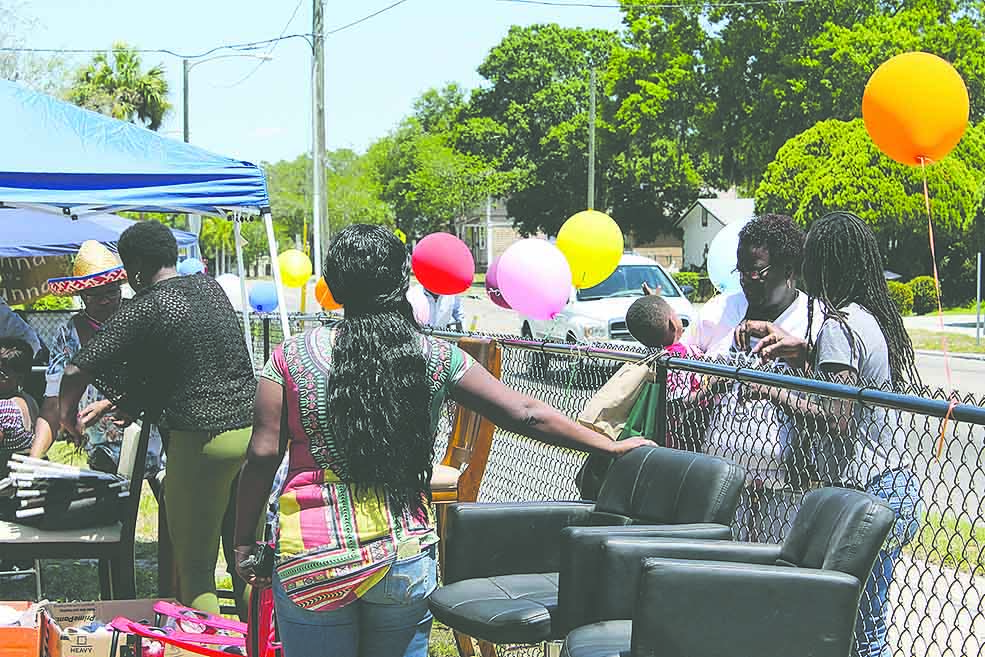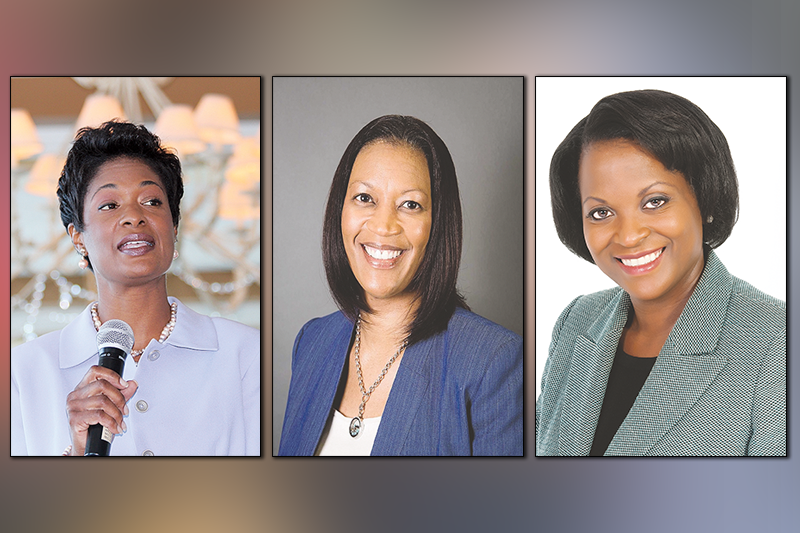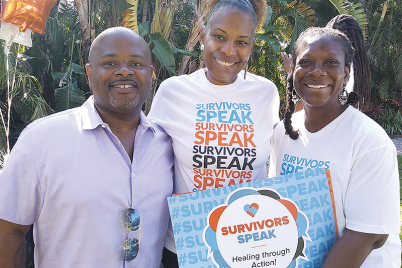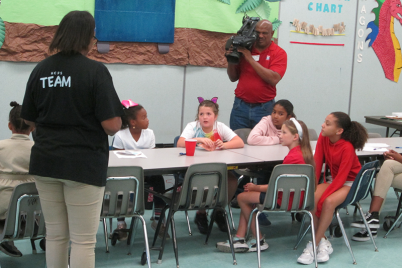L-R, Angela Rouson, Delphinia Davis, Nikki Gaskin-Capehart
BY INDHIRA SUERO ACOSTA, Staff Writer
ST. PETERSBURG — In 2012, the Economic Impact of Poverty report for Pinellas County identified south St. Pete an area that occupies about one-third of the city, as one of five high-poverty zones in the county. The document also determined that urban poverty costs — including healthcare and housing — reached $2.3 billion a year. The majority of black women residing in the city live in those neighborhoods.
The U.S. Census indicated that the number of African Americans living in poverty in St. Petersburg fell beneath 13,251 by the end of last year, but those numbers are still grim. Data from 2016 showed a 25.2 percentage rate of poverty among black women in the state of Florida, placing it as the highest percentage among females.
Nikki Gaskin-Capehart, who serves as the City of St. Petersburg’s Director of Urban Affairs, indicated that one of the central issues that threaten women who live in those communities is poverty.
She emphasized the necessity of empowering women and obtaining an education. Eventually, that will lead to better paying jobs and open more entrepreneurial opportunities.
“Like any other community, when you have poverty, women in particular especially if they’re single moms, you have to deal with problems that make it much harder for them to be able to raise their children,” Gaskin-Capehart said.
But financial stress also causes a level of apathy. This according to Delphinia Davis, who heads the James B. Sanderlin Center and who is also the Chair of the Board of Commissioners for the St. Petersburg Housing Authority. Many of the women in poverty are in the system — whether food stamps or housing — and, from her perspective, they are content.
“I try to tell them you should have a plan; you can’t be in housing forever. A lot of them get content because they lack the education,” explained Davis, who said they feel life is fine since they have a roof over their heads and food stamps to buy groceries.
“They’re comfortable with that. I could be wrong, but I say it just based on the applications.”
The women in this community also face even more difficult obstacles than females of other races, according to Angela Rouson, former president of the National Council of Negro Women St. Petersburg.

Data from 2016 showed a 25.2 percent of poverty rates among black women in the state of Florida, placing it as the highest percentage among females
“They’re earning smaller wages. They have more challenges as far as getting healthcare, education and opportunities,” Rouson indicated. “They struggle with being able to engage in their kids’ education.”
Survival
On the other hand, psychologist Vikki Gaskin-Butler explained that if African-American women feel disempowered in any way, it is related to the societal context where they find themselves.
“Those are women that experience discrimination and racism on a daily basis, even for those who think of being empowered in their fields,” Gaskin-Butler said.
The expert did not hesitate to say that the African-American community weighs on the shoulders of black women. In 2013, the 2020 Plan, a program designed to reduce the poverty rate by 30 percent in south St. Petersburg by the year 2020, indicated the number of females working full time was 2,421 and 673 men. On the other side, the number of women workers with higher education was 3,504 and 2,454 men.
“The positive things that you see in the community, the African-American women have something to do with it. If you see an African-American man doing something in the spotlight, I can guarantee that an African-American woman has something to do with what he’s doing,” Gaskin-Butler posits. “And if you see African-American women in the spotlight, there is an army of women who have supported her in her effort.”
There is also a need to highlight that the way one community defines empowerment may not be the same as another.
“We live in a society where we say that African-American women aren’t empowered based on privileged white middle-class kind of standards, and that might not be the norm to define empowerment regarding our community,” Gaskin-Butler explained.
Gaskin-Butler considered that the issue of poverty was not necessarily an empowerment matter. That is why she insisted that separating those terms will be the best thing because a larger society will say: “they are not empowered because they don’t have enough money.”
Deborah Figgs-Sanders —part of the staff who initiated the 2020 Plan — affirmed that women make up a large number of households and that providing these opportunities and resources to the Midtown area could contribute to improving the overall financial status.
“Our males make up the high scenery of poverty in history, and they make up a large number of those that don’t have a high school diploma,” Figgs-Sanders said. “Our males have a lot more barriers. It’s not the fact that women are more empowered, it’s that our men are trying to secure jobs and providing for their families.”
Her words could clarify the different results between black males and females on the south side — stated in the 2020 Plan — which explained that unlike black women, whose education gains correlate with earnings gains at every level, black men show a stark difference between those who are college-educated and those who are not.
“A lot of things that are happening have been put into place because of women. [They] are more patient and strategic; they take into consideration everything they have to work with before they try to move forward,” Figgs-Sanders said.
Hope
Davis feels that economic growth in south St. Pete would vastly improve the lives of black residents.
“[We] have a neighborhood center like Sanderlin, churches that are in the area, a center that deals with domestic violence, and I have seen improvement. Each day we are trying to implement new programs for the women,” Davis said.
For Gaskin-Capehart, there is an imperative need for community collaboration to touch the lives of all women and men living in poverty. The city cannot do this alone; it must have community partnerships.
As well, she said that not all the women in Midtown, Childs Park and other areas of south St. Pete are living in poverty and that part of the story also deserves to be told.
“There are people from the community who are doing great, who have great success. All of that is important to have in a community so they can create balance,” she said.
Entrepreneur
Lynn Johnson, the owner of House of Style Salon, always felt that she had a business mind. After years of working at Valpak in marketing, she decided in 2006 to buy a property in Midtown.
“Sometimes people talk about how the area is going down but they don’t do anything about it, and I felt that this was my opportunity to get involved and do something,” Johnson said. “I was watching TV and saw this ad for entrepreneurship academy from the Chamber of Commerce, so I signed up the next day and attended a 10-week course about finances. The opportunities are out there, you just have to be willing to take that risk.”
Johnson said women must believe in themselves and dare to dream. As she put it, whatever you want to do, you can do it; you just have to surround yourself with good people.
This story is part of a 50-article series honoring black women in the Tampa Bay area.
Post Views:
5,418










